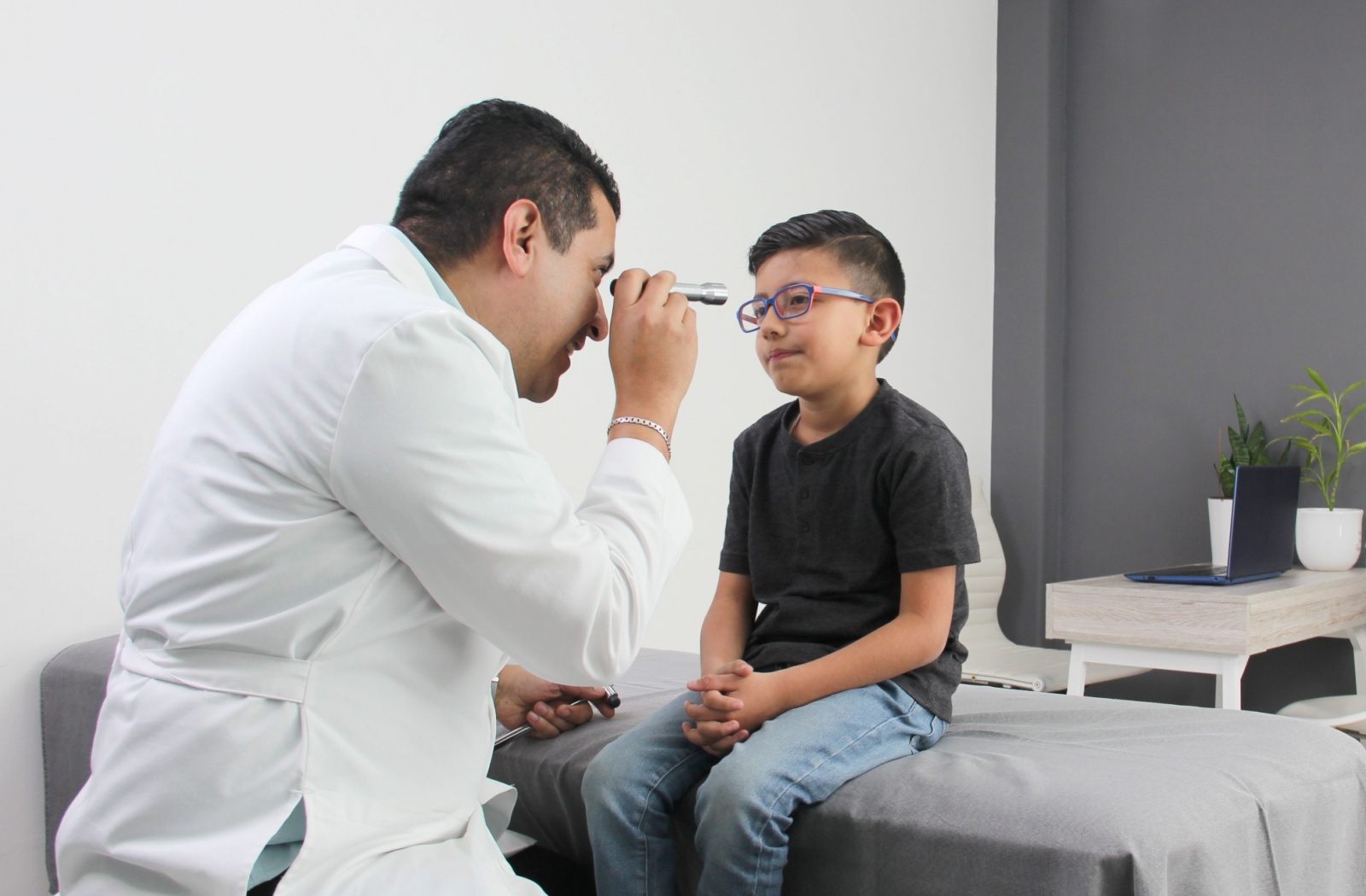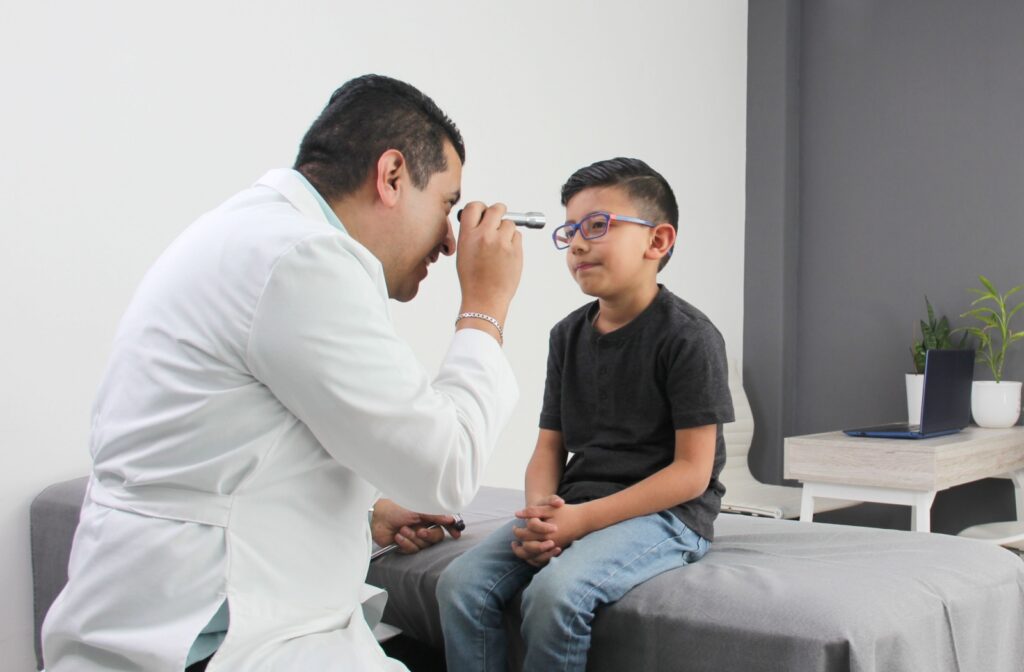Vision changes such as blurry vision, eye pain, redd, or sensitivity to light could be signs that it’s time for an eye exam. But how often should you go, and who pays for it? In Ontario, the Ontario Health Insurance Plan (OHIP) plays a significant role in covering healthcare costs, including eye exams for eligible individuals.
OHIP covers:
- One children’s eye exam per year for patients 19 years and younger.
- One eye exam every 12 months for adults 20 to 64 with potentially sight-threatening conditions.
- One eye exam every 18 months for seniors 65 and over.
- One eye exam every 12 months for seniors 65 and over with potentially sight-threatening conditions.
Importance of Regular Eye Exams
One clear benefit of regular eye exams is vision correction. Whether you need glasses, contacts, or an updated prescription, regular eye exams make sure you’re seeing as clearly as possible. This can improve your quality of life and prevent poor vision.
Regular eye exams in children help monitor their vision, which is important since the majority of what they learn is visual. Eye exams help pick up learning-related vision problems and correct these issues early so it doesn’t affect their performance in and outside of school.
Eye exams are also crucial for the early detection of eye diseases as many can develop without noticeable symptoms. Regular eye exams allow for disease monitoring and early diagnosis and treatment, preventing the worsening of symptoms and potential vision loss.
Did you know eye exams can also reveal other health issues? Conditions like diabetes and high blood pressure often have ocular manifestations. Your optometrist can spot these signs, recommend the appropriate treatment, and refer you to the appropriate healthcare provider for further evaluation.
Overview of OHIP
Understanding what OHIP covers can save you from unexpected expenses. OHIP is a government-run health insurance program that covers many essential healthcare services for residents of Ontario. This includes visits to doctors, hospital stays, and some medical tests.
But what about eye exams? Knowing the specifics of OHIP’s coverage for eye care can help you make informed decisions about your eye health.
OHIP Coverage for Eye Exams
Generally, OHIP covers annual eye exams or exams every 12 months for:
- Individuals aged 19 and under.
- Ages 20 to 64 with one or more potentially sight-threatening conditions.
- Age 65 and over with one or more potentially sight-threatening conditions, such as diabetes, glaucoma or macular degeneration.
OHIP covers one eye exam every 18 months for:
- Age 65 and over without a potentially sight-threatening condition. However, at Vision Care Centre, we recommend seniors visit their optometrist for an eye exam every 12 months, as it is vital to catch potential issues and conditions as early as possible.
OHIP also covers partial exams between regular eye exams:
- One partial eye exam in the year for ages 19 years and younger for a specific eye or vision problem.
- Two follow-up partial exams per year for ages 20 to 64 with a sight-threatening eye condition.
- Two follow-up partial exams per year for ages 65 and over with a sight-threatening eye condition.
If a senior needs your prescription check that is not covered as a partial exam, they will have to pay. Despite the above coverage times for eye exams for seniors, eye doctors may still recommend an eye exam every year versus every 18 months as seniors are at highest risk of having ocular health issues.
Eye Exams For Seniors
At Vision Care Centre, we recommend that seniors, including those without pre-existing eye conditions, schedule yearly eye exams with their optometrist. As you age, you are at a greater risk of developing sight-threatening eye conditions, and it is important to catch these issues early. Timely diagnosis can help your optometrist provide effective treatment. Remember: once vision is lost, it cannot be restored.
Sight-Threatening Eye Conditions
Potentially sight-threatening conditions eligible for an OHIP-insured comprehensive eye examination include the following:
- A confirmed diagnosis of diabetes.
- A confirmed diagnosis of glaucoma—increased eye pressure that causes damage to the optic nerve at the back of the eye.
- Cataracts or clouding of the eye’s lens that significantly impair vision.
- A retinal disease that affects the retina or the light-sensitive tissue at the back of the eye.
- Corneal disease that affects the cornea or clear front surface of the eye.
- An acute or progressive optic nerve pathway disease.
- Active uveitis.
- Patients taking Chloroquine, Hydroxychloroquine, Ethambutol, and Tamoxifen.
- Sudden onset of strabismus or crossed eyes.
Beyond OHIP: Additional Coverage Options
While OHIP provides substantial coverage, it doesn’t cover everything. For those who need more frequent eye exams or more comprehensive eye care, additional coverage options are available. Many employers offer extended health benefits that include eye exams and eyewear.
What if you don’t have additional insurance? If you visit your eye doctor at any time outside of the insured services, you’ll need to pay out-of-pocket for eye exams not covered by OHIP.
In Between Eye Exam Appointments
Don’t wait until you notice symptoms to schedule an eye exam. Being proactive about your eye health can save you from more severe problems later. When you go for your eye exam, don’t hesitate to ask questions. Your optometrist is there to help you understand your eye health and what you can do to maintain it. Discuss any concerns you have, whether it’s about vision changes or understanding your OHIP coverage.
Healthy Eyes & Vision
Regular eye exams are essential for maintaining good vision, eye health, and overall health. Understanding what OHIP covers for your age and eye health can help you take advantage of the benefits and when to expect to pay out of pocket.
Don’t leave your eye health to chance—schedule an eye exam with Vision Care Centre today and take the first step toward clearer, healthier vision.



